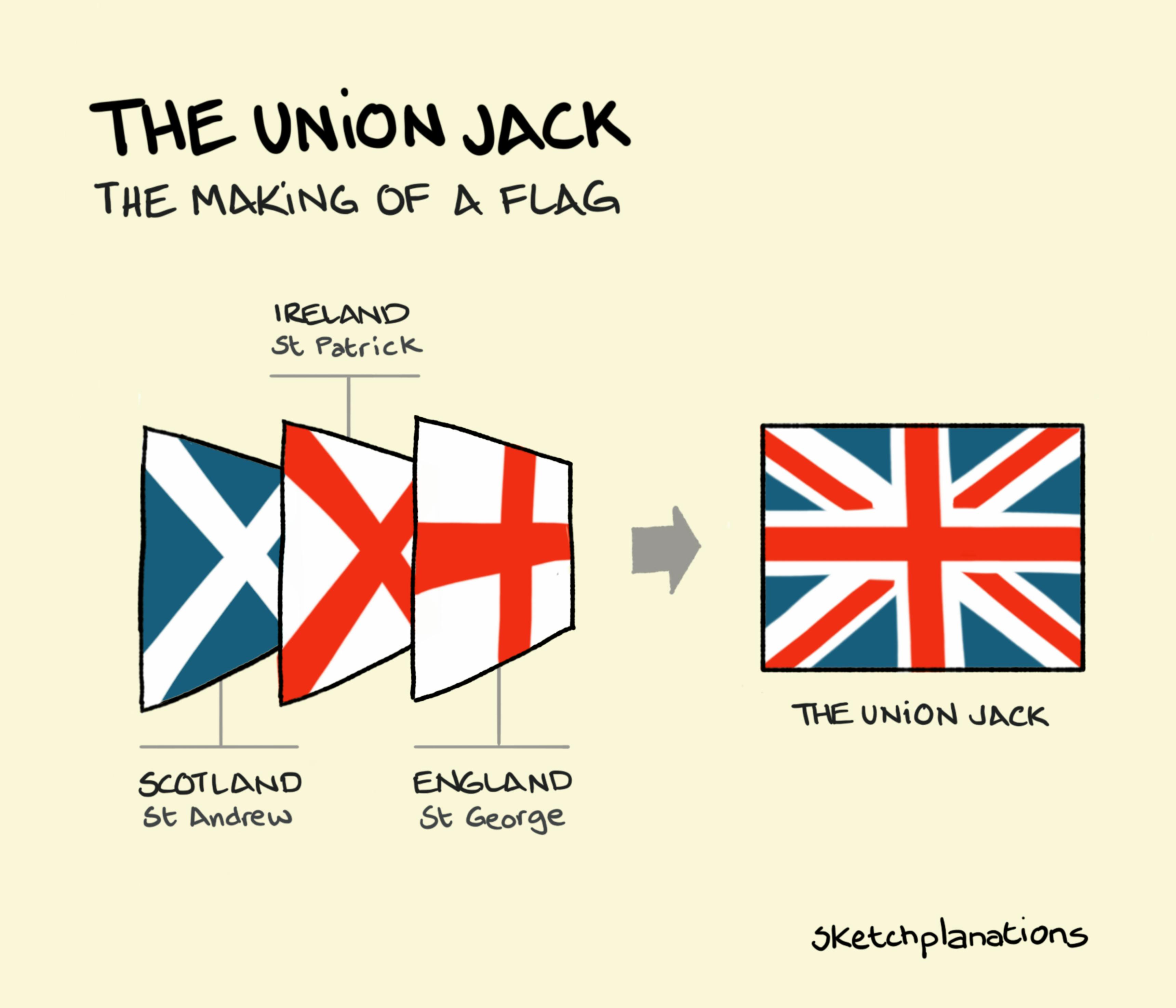The Union Jack

- Prints
- Copied!
👇 Get new sketches each week
The Origins of the Union Jack
The Union Jack, one of the most recognizable flags in the world, is a combination of three historic flags. It represents the union of nations within the United Kingdom at the time the Union Jack flag design was created and is made up of:
The Saltire of St Andrew for Scotland: a white diagonal cross on a blue background. The term “saltire” refers to this specific diagonal cross shape in heraldry.
The Cross of St Patrick for Ireland: a red diagonal cross on a white background. Though Ireland is no longer part of the United Kingdom, it is still represented in the design.
The Cross of St George for England: a red cross on a white background.
You may notice that Wales, which is part of the United Kingdom, is not represented on the Union Jack flag. This absence is because Wales was considered a principality under the Kingdom of England, not a separate kingdom, when the flag was created.
The Evolution of the Union Flag
The Union Jack we know today didn’t always look this way. The first version, known as the Union Flag of 1606, only combined the crosses of St George and St Andrew, representing England and Scotland. It wasn't until 1801, with the Act of Union between Great Britain and Ireland, that the Cross of St Patrick was added, resulting in the modern Union Flag, often referred to as the Union Jack.
Why is it Called the “Union Jack”?
The term “Union Jack” comes from naval usage. A “jack” is a flag flown from the bow of a ship. Originally referred to as the Union Flag, it became more commonly known as the Union Jack when flown at sea. Over time, this name has become standard, even on land.
According to the Flag Institute , the terms are often used interchangeably. However, some argue we should only call it a “Union Jack” when flown on a ship.
The Union Jack on other Flags
By representing the United Kingdom, the Union Jack appears on other flags. For example, the Union Jack flag is part of Australia's flag, which also includes the Southern Cross, and New Zealand's flag. It's also part of the flags of several Commonwealth countries and British Overseas Territories. It is often used symbolically to represent the UK in popular culture and events worldwide.
Sometimes, people refer to it as the Great Britain flag, though this is not technically accurate, as Great Britain refers only to the island, not the full union.
Vexillology: The Study of Flags
If you're interested in flags, you might already know someone studying flags is called a vexillologist. Vexillology is the study of the history, symbolism, and usage of flags. Like the history of the Union Jack here, flags are both a symbol and a product of the history and culture of a country or institution. The history and construction of the Olympic Flag is a good example.
Also see:
- Curious about the difference between Great Britain and the United Kingdom?
- The Olympic Flag and rings

